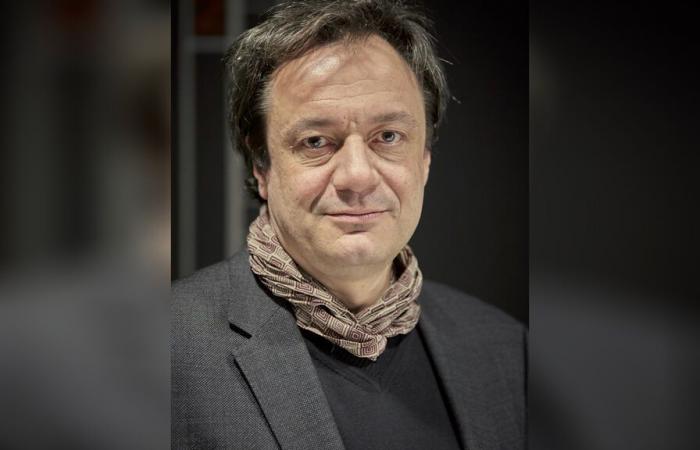
The Spanish region located around Valencia, the city where your García Floquet Arquitectos agency has been based for more than 20 years, suffered intense rainfall on October 29, causing large and violent floods. How do you view this event?
The meteorological phenomenon called “gota fría”, the cold drop, has always been known in the Valencia region, and in the Mediterranean in general. It occurs every fall and causes significant rainfall. They are generated by the meeting between masses of warm air coming from the sea and currents of cold air at high altitude. According to meteorologists, the violence of the phenomenon in recent days is linked to the increase in the temperature of the Mediterranean this summer, which has increased the quantity of water vapor suspended in the atmosphere. There was a multiplying factor due to this warming. This, of course, raises questions about the vulnerability and future of this territory between sea and mountains.
Why was the city of Valencia not impacted?
Completely flooded in 1957, Valencia was spared this time thanks to the presence, to the south of the city, of a diversion canal for the Turia river built in the 1960s. As an architect, I considered this operation civil engineering, decided under the regime of General Franco, as an object out of scale, because it represented a kind of injury in the territory. We realized these days that this 400 m wide channel had saved Valencia from the waters. It was full to the brim even though it can carry 2 million cubic meters per second! On the other hand, the nearby municipalities of Paiporta and Chiva were not spared. Being also crossed by rivers and, therefore, facing the same risk of flooding, they could and should have benefited from the same type of development. But of course it seems difficult to imagine building such structures throughout the territory.
READ ALSO
Floods (Ep.4/5): when geomatics reconciles water and Zan
In Paiporta, you and your partner Monica García built a detached house for friends in 2019. What is the situation there today?
The ground floor of the house was submerged under 2.50 m of water. This is not a flood of a few tens of centimeters, but a liquid wall which has spread throughout the city. Like all those people you saw on the TV news, we went to help our friends using shovels and buckets to empty the mud. The reinforced concrete structure has held up very well. But the material damage is terrible. So much so that a car arrived in the garden, carried by the current. In this highly urbanized area, residents leave their vehicles in the streets. We saw them floating in the Dantesque images recorded by certain residents. These objects added additional danger to the floods by crashing against facades and sometimes killing people.
Was the area identified as flood-prone on the town planning plans?
When we designed this project, the municipality had mapped the risk areas. Our clients' house was located outside, which allowed us to build it and provide habitable spaces on the ground floor. We realize today that all of Paiporta is now subject to flooding. And that we will surely have to rethink architecture and town planning in this area based on the new data collected and no longer just those from the 50-year floods. I remember that in 2019, during a cold drop, the “barranco”, that is to say the ravine which crosses the city, was filled to the brim, almost overflowing. It had already reached its maximum capacity. There, in 2024, it has completely surpassed it.
Let's try to limit the risk of flooding by rethinking how to divert water to areas where it can spread less quickly and more naturally.
More broadly, do you think that this disaster will have consequences on the Valencia region in terms of land use planning?
Yes, for sure. In every city, everyone is now perfectly aware that there is danger in the house with these ravines, the “barrancos”. So we will have to act. Measures must be taken to avoid another disaster of this magnitude. Let's prevent a highway and a railway line from creating dikes that transform a valley into a channel. And let's imagine permeable infrastructures instead. Let us also try to limit the risk of flooding by rethinking the way of diverting water towards spaces where it can spread less quickly and more naturally. It may seem obvious, but when a river overflows its bed, you have to give it room. And today, it is this place that he lacks.
Has urbanization been controlled in recent decades?
Above all, I think that it was not coordinated. The city and villages have expanded with population growth, leading to the reduction of surrounding agricultural land. The “huerta”, the market gardening plain of Valencia, has lost 50% of its surface area since the 1950s, and therefore as much permeable surface area. My concern, and that of the population, is about the immediate future of this “huerta” and the Albufera natural park which received all the waste carried by the floods, as well as the associated pollution. The fields and lagoon landscape are completely devastated. A long recovery period will be necessary before farmers and biodiversity return to normal activity and conditions.
Who manages issues relating to town planning locally?
Spain is a very decentralized country. However, the regional government, criticized for its management of the crisis, does little or nothing about town planning. This question is left in the hands of the municipalities. However, mayors do not necessarily have a global vision of a territory when making local decisions. In the near future, I think we will have to think about urbanization not only by city, but as is done in France, by community of municipalities. This will make it possible, for example, to take into account the risk of flooding, but also the general urban and landscape quality, on the scale of an entire watershed.
READ ALSO
Floods (Ep. 2/5): the Adour basin would like to rebuild even better
Will you participate in the reflections on the future of this territory, as an architect and professor of architecture at the Valence school?
What is certain is that we cannot sit idly by what has just happened. All of this will guide our practice and our courses at the school of architecture, where we must offer students exercises that take into account a much larger scale than the simple built object. The layout of the streets and urban furniture should also be the subject of a project which helps to limit the risks in the event of flooding, and to promote the evacuation of water.
What lessons do you think cities, departments and regions in France can learn from this event?
I think that France, which has experienced a series of significant climatic events in recent years, is aware of the situation. This country shares with Spain a large Mediterranean front with similar territorial configurations. So, it is obvious that what Valence experienced, other municipalities in the south of France can also experience. And very recently we were able to see that the northern regions were not spared either. Dramatic events are multiplying, this is unfortunately obvious and it is urgent to take them into account in the “project” of the territories.





